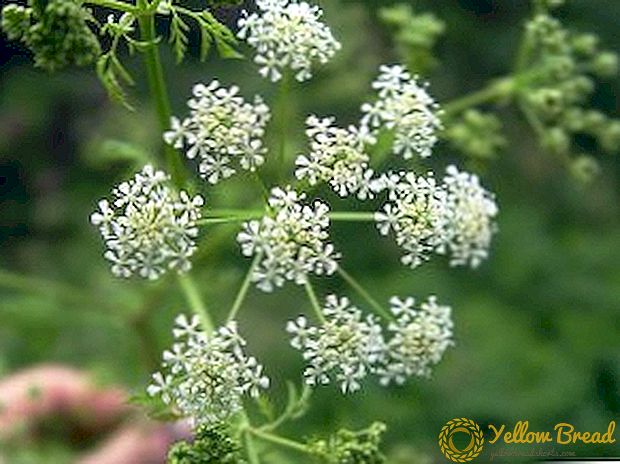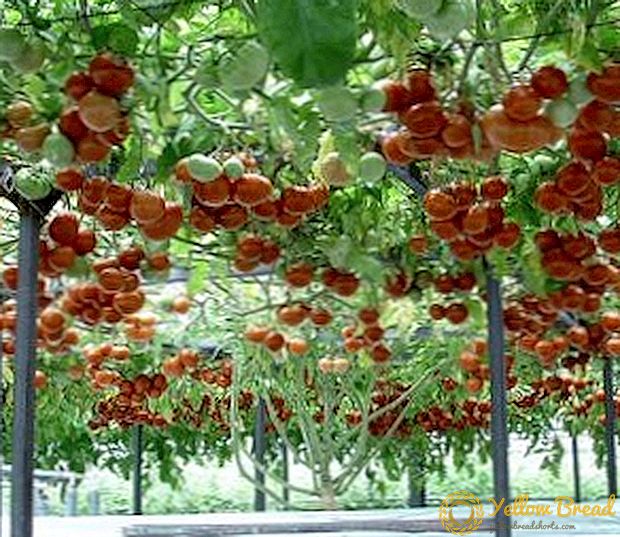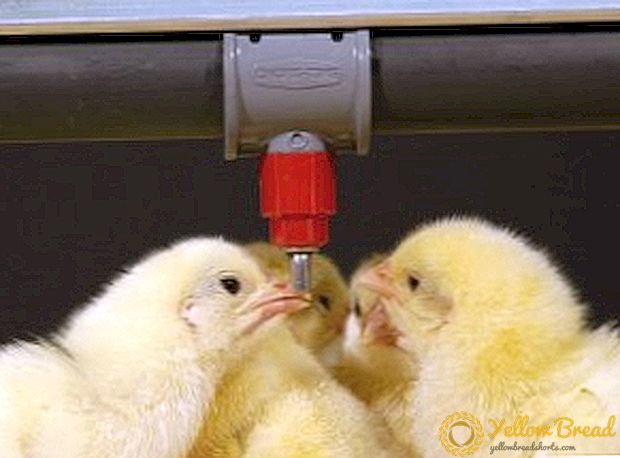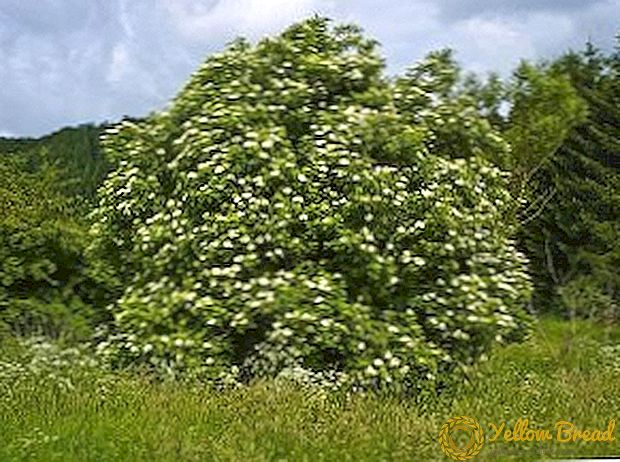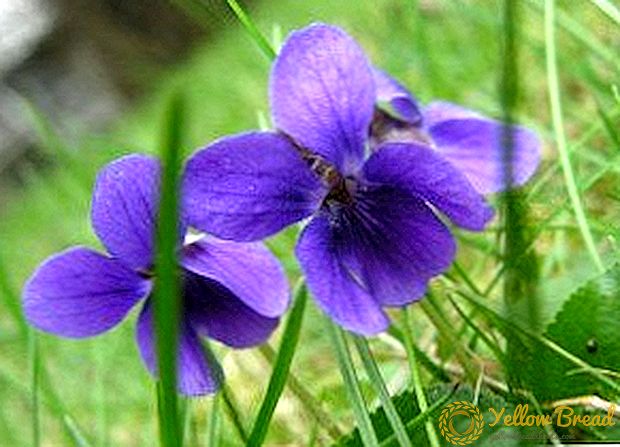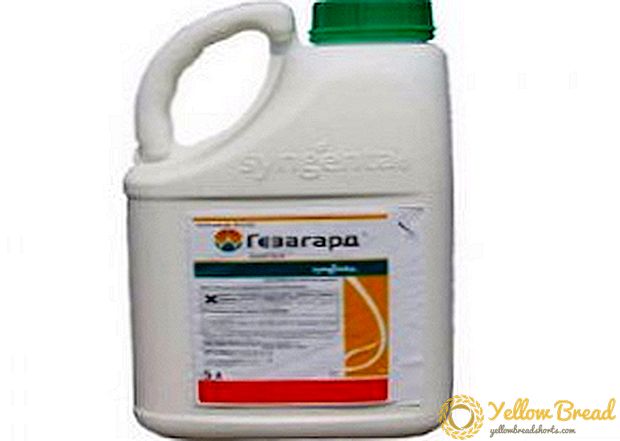 Having made the decision to sow the land with rye, you were not mistaken. This is a win-win option, if only because in agronomy culture is widely used as a green fertilizer and a medic of the soil. The harvested harvest will also be used - there are many culinary and medical recipes, the main ingredient in which are grains, bran and even rye stalks. We managed to gather practical advice from the best industry experts on how to organize the preparation, planting and cultivation of this grass.
Having made the decision to sow the land with rye, you were not mistaken. This is a win-win option, if only because in agronomy culture is widely used as a green fertilizer and a medic of the soil. The harvested harvest will also be used - there are many culinary and medical recipes, the main ingredient in which are grains, bran and even rye stalks. We managed to gather practical advice from the best industry experts on how to organize the preparation, planting and cultivation of this grass.
- Spring and winter rye: description
- Features of planting rye
- How to prepare the ground for rye
- Optimal sowing time
- Sowing technology (methods)
- Rye: rules of care (control of weeds, pests, tillage, top dressing)
- How to properly clean rye
Spring and winter rye: description
To begin with, we define what rye is, what are its features and differences.
For agricultural purposes for large-scale harvesting of forage sown rye, obtained in the process of crossing wild and cultivated species. Rarely encountered. In the northern regions of Ukraine, the varieties "Tatyanka" and "Vesnyanka" are popular, and in the southern regions - "Odessa perennial".
 To meet food needs and as a siderata, rye is used, which grows for one year. In most cases, this group is represented by diploid varieties ("Amanda", "Struggle", "Boguslavka"), which are characterized by resistance to frost and lightness. They are also unpretentious to the growing conditions. Long-term studies and experiments of breeders were crowned with the emergence of tetraploid rye, for example, “Puhovchanka”, the typical signs of which are endurance to lodging stalks and large grain.
To meet food needs and as a siderata, rye is used, which grows for one year. In most cases, this group is represented by diploid varieties ("Amanda", "Struggle", "Boguslavka"), which are characterized by resistance to frost and lightness. They are also unpretentious to the growing conditions. Long-term studies and experiments of breeders were crowned with the emergence of tetraploid rye, for example, “Puhovchanka”, the typical signs of which are endurance to lodging stalks and large grain.
Powerful root system differ annual rye varieties. The spongy roots deepens by 1.5 - 2 meters and do not depend on watering. In addition, they have a high ability to absorb nutrients. With deep planting of seeds, bush nodes are laid on two levels: upper and lower. The primacy remains in the one in the upper layer of the ground. In favorable conditions, more than 50 shoots can grow from one seed. Productivity in the range of 20 - 40 kg / ha.
Annual and perennial herbaceous members of the family of cereals are divided into two genus: spring and winter. Regardless of the classification, rye belongs to the resistant aggressive plants and according to the description of the characteristics prevails over wheat. Firstly, it is less demanding of growing conditions, secondly, only phytosanitary properties are inherent in it, and thirdly, the plant resists diseases and pests well.
 In practice, winter crops are sown more often (Niva, Khakada, Drevlyanskaya). They yield a greater yield even on poor sandy soils, tolerate high acidity of the soil, spring droughts and spike during mild snowy winters. Without cover, it can survive 25 degrees of frost. Winter rye is distinguished by biological features and gives the first shoots at 1 - 2 ° С, and at 12 ° С greens completely tighten the area and quickly bush. On average, the growing season lasts from 270 to 350 days.At the same time, the culture is very sensitive to high temperatures, can thicken during thickening, and when used as an intermediate plant it dries the soil. Planted on the place of vegetables need to be watered thoroughly. Spring rye is sown in spring, to a greater extent in the Carpathian region and the mountainous regions of the Carpathians. In the central and northern regions of Ukraine, it is often grown as an insurance against the freezing of winter crops, as well as in feed mixtures. Popular varieties are "Onokhoy", "Tulunskaya", "Kabarda". Their feature is the need to increase the seeding rate due to bad tillering. Despite the existence of different annual sowing species, common rye is cultivated in domestic agriculture.
In practice, winter crops are sown more often (Niva, Khakada, Drevlyanskaya). They yield a greater yield even on poor sandy soils, tolerate high acidity of the soil, spring droughts and spike during mild snowy winters. Without cover, it can survive 25 degrees of frost. Winter rye is distinguished by biological features and gives the first shoots at 1 - 2 ° С, and at 12 ° С greens completely tighten the area and quickly bush. On average, the growing season lasts from 270 to 350 days.At the same time, the culture is very sensitive to high temperatures, can thicken during thickening, and when used as an intermediate plant it dries the soil. Planted on the place of vegetables need to be watered thoroughly. Spring rye is sown in spring, to a greater extent in the Carpathian region and the mountainous regions of the Carpathians. In the central and northern regions of Ukraine, it is often grown as an insurance against the freezing of winter crops, as well as in feed mixtures. Popular varieties are "Onokhoy", "Tulunskaya", "Kabarda". Their feature is the need to increase the seeding rate due to bad tillering. Despite the existence of different annual sowing species, common rye is cultivated in domestic agriculture.
Features of planting rye
Sowing rye on a vegetable garden, you protect it from erosion and enrich it with nitrogen, potassium, organic substances that contribute to loosening and air permeability of the soil. In addition, at the same time get rid of annoying pests and weeds. Even perennials like wheatgrass and knotting will not stand.
It is advisable for winter rye to prepare the site in advance and organize its sowing after late crops. It can also be used as a precursor for dead and spring grains or as an intermediate plant. No wonder that agronomists call rye green fertilizer, which is not inferior in its quality to humus and mineral complexes. For this purpose, it is necessary to calculate the sowing so that the interstices of the future siderat will be formed before spring.
 In the off-season, when most of the representatives of the vegetable flora can not fully develop, the roots of rye loosen the soil, and with the onset of a thaw they germinate, which quickly increase biomass. The germination of shoots will be accelerated by harrowing the bed with a rake. Hand a few weeks before planting the main crop, rye sprouts are cut under the condition that their height reaches 60 cm, and they are buried 3-5 cm in the ground, so that the mass of the burst is crossed and the earthworms are wound up in it. On average, about 5 kg of green should be per square meter. Potatoes, zucchini, tomatoes, pumpkin, cabbage, cucumbers will quickly grow on such a land.
In the off-season, when most of the representatives of the vegetable flora can not fully develop, the roots of rye loosen the soil, and with the onset of a thaw they germinate, which quickly increase biomass. The germination of shoots will be accelerated by harrowing the bed with a rake. Hand a few weeks before planting the main crop, rye sprouts are cut under the condition that their height reaches 60 cm, and they are buried 3-5 cm in the ground, so that the mass of the burst is crossed and the earthworms are wound up in it. On average, about 5 kg of green should be per square meter. Potatoes, zucchini, tomatoes, pumpkin, cabbage, cucumbers will quickly grow on such a land.
It is best to sow the cereal after lupine, oats, perennial grasses with one-prickly use, flax, silage corn, potatoes.By the way, it is after this root crop that the earth is sick with nematodes and is in need of rehabilitation, for which rye is needed.
How to prepare the ground for rye
Depending on the predecessors and the soil and climatic conditions, the main and preplant tillage is carried out. Preparation begin one month before sowing. To begin with, plow the top layer with or without a plow. In a certain place of the site where rye will grow, after early ripening plants, the main tillage is carried out as semi-steamed. It is enough one or two peeling disc and plowshare, plowing with a plow to a depth of 22 - 25 cm and two - three cultivations, and each time reduce the depth by several centimeters.
When sowing rye after flax and potatoes, the garden is clean from weeds and treated with flat-cutters with needle-like harrows to a depth of 10 - 12 cm. In littered beds, they deepen to 20 - 22 cm.
If corn rye and herbaceous perennials were precursors of winter rye, it is necessary to walk the disc harrows to a depth of 12 cm and plow the plow by 25 cm.
 After grain, the area is peeled and plowed to a depth of 16 - 18 cm in the northern regions of Ukraine and 20 - 22 cm in the central-southern. At the same time it is necessary to carry out rolling and harrowing. Consider, if there is very little time left before sowing rye, it is better to dispense with surface treatment with disc shells.
After grain, the area is peeled and plowed to a depth of 16 - 18 cm in the northern regions of Ukraine and 20 - 22 cm in the central-southern. At the same time it is necessary to carry out rolling and harrowing. Consider, if there is very little time left before sowing rye, it is better to dispense with surface treatment with disc shells.
Lupine, grown for fertilizer, is embedded in the ground by 25 cm, when grayish peas were formed on it. The land is plowed to a depth of 18-20 cm.
So that the prepared area is not overgrown with weeds before sowing, it is periodically cultivated and harrowed. Before sowing, the cultivator is once again treated to a depth of lowering the grain. Some agronomists recommend an alternative of combining units of the type RVK - 3.6, RVK - 5.4.
Optimal sowing time
The period when rye is sown before winter depends on the characteristics of the variety, the climatic conditions of the region, soil moisture, the precursor and the weather. For example, diploid species and rye with poor previous garden residents need early sowing.To create a favorable environment in the fall and prevent overgrowth of the crop, reduce its frost resistance, winter crops should be sown in the second half of the recommended dates. As a result, the coolest specimens will have time to form for further development.
In the Ukrainian agricultural enterprises of the western part of the country and the Forest-Steppe for a safe wintering, they are sown in the second decade of September, in Polesie - in the first, in the Steppe - in the second - the third decade.
Knowing how fast rye grows, it is important not to miss the moment. On average, sowing should occur 50 days before a constant decrease in temperature (4 - 5 ° C). During this period, the shoots will get stronger and rise by 25 cm. If you sow sooner or later, the culture may not survive the winter.
Winter varieties can be sown in the spring, but the crop should not count. In order for the culture to have time to get stuck, they carry out its vernalization - seeds germinated to one millimeter are powdered with a moist substrate and sent for a month in the fridge. After the manipulations are sown. There is an opinion that when the rye grown by this method is harvested, an increase in its yield is noted.
Sowing technology (methods)
There are three ways of sowing:
- the usual private with tramlines (the most effective, because it allows you to evenly distribute the seed);
- narrow;
- cross.
Winter rye in terms of sowing and methods close to wheat. The optimal depth for grains in black soil with a sufficient moisture content is 3–4 cm, on light soils — 5–6 cm, and in dry weather 7–8 cm. Do not forget that the tillering node of rye is close to the roots, therefore a strong depression does .
Inter-row spacings are made by 15 - 20 cm.
Rye: rules of care (control of weeds, pests, tillage, top dressing)
By and large, care for rye beds, compared to wheat, is much easier and cheaper. The explanation for this is the endurance of the plant to parasites and pathogens. Before growing rye, let us familiarize with its main requirements, conditionally dividing them by seasons.
In the autumn it is important to create conditions for good germination, rooting, tillering and pouring of cereals. To this end, the sown area is rolled in dry weather, with the exception of crops on heavy soils. Otherwise, you run the risk of severely compacting the grains and the soil, getting a tight crust, which makes it difficult to squeeze the shoots.
 In the winter, it is advisable to improve the bed with phosphorus-potassium mixture, which will strengthen and promote hardening of rye. For young shoots, nitrogen-containing fertilizers are not advised yet - they will destroy the cold-resistant qualities of the variety.
In the winter, it is advisable to improve the bed with phosphorus-potassium mixture, which will strengthen and promote hardening of rye. For young shoots, nitrogen-containing fertilizers are not advised yet - they will destroy the cold-resistant qualities of the variety.
In winter, you need to help the grass to overcome the cold, the formed ice crust and other obstacles to growth. To retain the crop and increase its yield will help the retention of snow. In large farms, it is carried out by forest belts, and at home it can be confined to the arrangement of brushwood or shields.
From the end of November to the very March, vigilant owners grow samples for the application of competent measures for further care.
In the spring you need to make sure that the field does not accumulate water. If she stays more than 10 days in the field, everything will be gone. On sandy soil, which constantly suffers from a lack of moisture, there is a need to retain thawed streams. And in the conditions of a sharp premature thaw, roll in a roller to hold the snow cover on it. The procedure will help rye to safely survive the subsequent frosts. You should not condense the whole territory, leave the aisle.
With the onset of heat, a few days after the earth lump ceases to stick together, spend harrowing to destroy the upper crust and remove the weeds that have appeared. Rye aggressively displaces other plants from the site, so herbicides are rarely applied in heavily littered places.
 Soon it will be necessary to feed the sprouts that have survived after the winter.Agronomists recommend to apply mineral fertilizers twice: under the main tillage in spring. Norms are calculated to a level lower than that of winter wheat, since large dosages provoke lodging of the stems. In addition, rye absorbs nutrients even from inaccessible soil depths much more intensively. On average, 45 to 90 kg of nitrogen, phosphorus and potassium are used per hectare. Adjustments make features soils. The rate is increased when the precursors were stubble, and when growing tetraploid rye species. But after corn it is worthwhile to increase the amount of nitrogen, and, on the contrary, to decrease after peas, perennial grass plants.
Soon it will be necessary to feed the sprouts that have survived after the winter.Agronomists recommend to apply mineral fertilizers twice: under the main tillage in spring. Norms are calculated to a level lower than that of winter wheat, since large dosages provoke lodging of the stems. In addition, rye absorbs nutrients even from inaccessible soil depths much more intensively. On average, 45 to 90 kg of nitrogen, phosphorus and potassium are used per hectare. Adjustments make features soils. The rate is increased when the precursors were stubble, and when growing tetraploid rye species. But after corn it is worthwhile to increase the amount of nitrogen, and, on the contrary, to decrease after peas, perennial grass plants.
A full dose of potash fertilizer, 80% of the phosphate dose is applied when tilling, the remaining 20 - 15% of phosphorus - when sowing. As an alternative, heavily degraded phosphate flour mixed with manure and peat is considered. On poor substrates, it is appropriate to form fertilizer with nitrogen (30 kg / ha).
For additional feeding of green mass, 30–60 kg / ha of nitrogen are introduced at the third stage of organogenesis, and 30 kg / ha at the fourth stage. In an acidic environment, when the pH is less than 5, winter crops do not have enough lime (3–5 t / ha), and in salt marshes - gypsum (3–5 t / ha).
From organic fertilizers for rye, manure is important, compost mixtures of peat and manure, phosphate rock with lime.
 In the summer there is no need for tillage, however, care does not stop. Now comes the time to combat pests, diseases and preventive measures. Despite the stability of rye, due to some climatic circumstances, it is possible that winter crops are infected with a scoop. Its caterpillars die under the influence of insecticides. The plant is loved by weevils, grain beetles, bedbugs, turuns, and cross mare. They spoil the stems and grain. Periodically inspect the garden and process it in calm weather with special tools. The pests will disappear from the soil, if the timely harvesting of winter rye and straw and properly prepare the soil. Seeding would be appropriate.
In the summer there is no need for tillage, however, care does not stop. Now comes the time to combat pests, diseases and preventive measures. Despite the stability of rye, due to some climatic circumstances, it is possible that winter crops are infected with a scoop. Its caterpillars die under the influence of insecticides. The plant is loved by weevils, grain beetles, bedbugs, turuns, and cross mare. They spoil the stems and grain. Periodically inspect the garden and process it in calm weather with special tools. The pests will disappear from the soil, if the timely harvesting of winter rye and straw and properly prepare the soil. Seeding would be appropriate.
Do not forget to pluck rare weeds. In order to prevent the lodging of the stems, in the booting phase they are sprayed with Kampazon 50% (3–4 l / ha) or with a mixture of Campazon (1, 5–2 l / ha) and TURA (3 l / ha). By the way, the last drug can be mixed with herbicides, if there is a need for their introduction.
How to properly clean rye
The rye ripens when the grain keeps well in the spikelet and does not crumble, however, the dry substances cease to enter it. Harvesting the grain mass begins in the middle of wax ripeness, preventing the loss of seeds and lodging ears. This process is carried out first using rollers with an optimal thickness of 20 cm, 15 cm - with an excess of moisture in the air and 25 cm - with drought. In this case, the combine does not change directions, ears of grain are fed into the header. Winter rye in terms of harvest ripens faster than wheat for 7 - 8 days.  The resulting grain is first cleaned, sorted, and then goes to the drying and storage.
The resulting grain is first cleaned, sorted, and then goes to the drying and storage.
Peeling stubble in the garden and plowing the soil to a depth of 20 cm. In the future, the processing using semi-pair technology and three-time cultivation will not interfere. The measures taken will warn future cultures from parasites and fungi.

